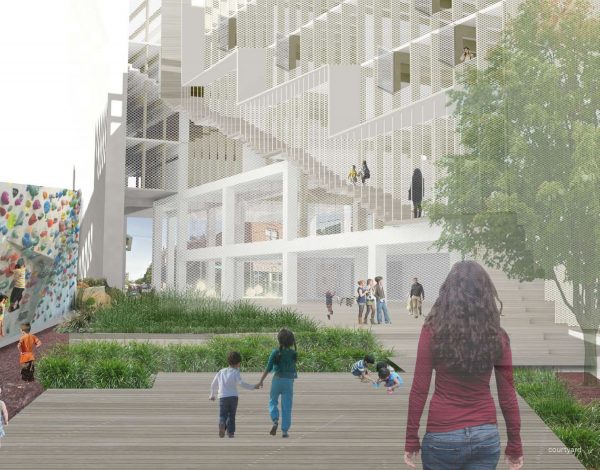Who We Are
What We Support
Sharing Our Work
Sharing Our Work

During spring quarter 2013, students and faculty of the UW Department of Architecture welcomed Dorte Mandrup as the Scan Design Foundation Visiting Distinguished Professor. For the second year in a row, the founder and owner of the award-winning firm Dorte Mandrup Arkitekter, based in Copenhagen, Denmark, came to the University of Washington and led a group of students in an advanced graduate architecture studio, co-taught by Associate Professor Peter Cohan.
The primary goal of the studio was to examine how architectural ideas could reinforce the human scale and space of the city. In order to explore critical issues involved in the creation of public space and to contribute in some relevant way to the current architectural debate in Seattle, the studio focused on the Belltown Bluff portion of the new Waterfront Seattle Plan.
Design Project The city of Seattle has decided to take down the Alaskan Way Viaduct and re-establish stronger connections to Elliott Bay. The Seattle Waterfront Plan envisions a series of public amenities along the waterfront, stretching from Pioneer Square to the south to Belltown to the north. Demolition of parts of the Viaduct has already begun, and portions of the design are well underway. However, little attention has yet been paid to the northern end of the plan. Other than the initial conceptual proposal by Field Operations in the July 2012 Seattle Waterfront Concept Design, the Belltown Bluff region remains largely unplanned.
The goal of the Mandrup studio was to propose design strategies to connect Belltown with the already developed portions of the Seattle Waterfront Plan, while providing amenities for and responding to its strong neighborhood context. Students were asked to encompass both urban and building scales through the development of specific urban design proposals and explorations of their architectural consequences. Urban design strategies were developed in teams, then students addressed the building scale with individual projects. Working within the context created in their urban design proposal, each student determined his or her own site and program, leading to a series of unique and dynamic interventions.
The studio was structured around two intensive design charrettes coinciding with Dorte’s visits to Seattle: one during the third week of the quarter and another during the ninth. Students spent the time prior to her first visit on site analysis and developing urban design concepts. They began by gathering site information: documentation of the areas to be vacated by the viaduct; history research; identification of open spaces; vehicular, bicycle, pedestrian and transit mapping; documentation of neighborhood building uses and typologies; collection of historical maps and census data; identification of yearly neighborhood events and activities; daylighting analysis; and various means of capturing the unique experiential qualities of the Belltown neighborhood.
Students were then asked to develop urban design concepts in teams, considering connections to the overall plan, the waterfront and the Belltown neighborhood. Each urban plan was required to address the Waterfront Seattle goals of providing democratic public space and access to the waterfront for all. At the same time, they were to reflect the historical importance of the neighborhood, elevate the role of sustainable design by exposing natural systems, and be flexible enough to accommodate future changes.
Dorte’s first day in studio began with site analysis presentations followed by a review of the urban design concepts. The three concept proposals were documented using massing models, building programming